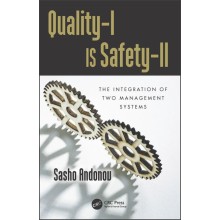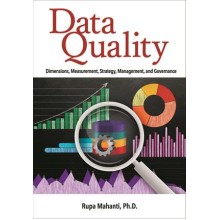Effective Portfolio Management Systems
ISBN: 9781466572539
Author: Christopher F. Voehl, H. James Harrington, William S. Ruggles
Dispatch Time: 15 - 30 Days
Quantity:
-
Add to Compare
Effective Portfolio Management Systems provides a roadmap for the implementation of an organizational Portfolio Project Management (PPM) system and a model for driving sustainable change. It takes you through the complete project/program management cycle—from the submittal of the proposed projects to the management of their implementation. To do this, the authors present an effective, proven, four-phase Organizational Portfolio Management (OPM) system:
- Phase I: Developing the Organizational Portfolio involves selecting the right mix of projects/programs based upon resource limitations and risks involved.
- Phase II: Creating the OPM System Implementation Plan is the development of a plan to minimize the resources consumed, reduce cycle time, and increase the ability of the projects to meet their projected value-added content to the organization.
- Phase III: Implementing the OPM System focuses on the complexity of managing an Organizational Portfolio and keeping it aligned with the organization’s goals and objectives. This phase provides a roadmap for the implementation of an organizational PPM system, including sample plans and PMO Implementation/Management Templates.
- Phase IV: Practical Applications of Project Change Management within the OPM System focuses on overcoming the difficulties related to the continuous changing environment and project requirements that are encountered as projects are developed and implemented in today’s demanding conditions. This phase provides guidelines for effectively enrolling, communicating with, and training the individuals who are impacted by the project/program to effectively drive sustainable change.
At first glance, an OPM system may look like increased bureaucracy. However, when it results in a 20-percent increase in the percentage of projects that are successful, it really turns out to be one of the best resources an organization can invest in to ensure profitability and long-term sustainable results.
Table of Contents
Overview of Organizational Portfolio Management
Introduction
Organizational Portfolio Development Cycle
Phase I: Develop the Organizational Portfolio
Phase II: Create the OPM System Implementation Plan
Phase III: Implement the OPM System
Phase IV: Practical Applications of Project Change Management within the OPM System
Summary
Phase I: Develop the Organizational Portfolio
Introduction
Developing the Organizational Portfolio: A Typical Scenario
Thirteen Fundamental Terms
Activities for Phase I
Activity #1: Assign an Individual and/or Team (Portfolio Development Leader) to Set Up and Manage the Development of the Organizational Portfolio
Activity #2: Classify the Business Cases Using a Qualitative, Quantitative or Blended Model Based on the Potential Value
Activity #3: Prioritize the Projects and Programs Based on the Resources Available
Activity #4: Select Projects and Programs for the Portfolios and Assign a Portfolio Leader to Oversee Them
Activity #5: Identify a Sponsor and Project Manager for Each Project and Program
Activity #6: Define High-Level Project Milestones and a Budget for Each Project and Program
Activity #7: Obtain Executive Approval for Each Project and Program Including Its High-Level Milestones and Budget
Summary
References
Phase II: Create the OPM System Implementation Plan
Introduction
Activities for Phase II
Activity #1: Prerequisites for OPM System Implementation Planning
Activity #2: Establish the Project Management Office (PMO)
Activity #3: Assemble the OPM System Implementation Team
Activity #4: Create the OPM System Implementation Plan
References
Phase III: Implement The OPM System
Introduction
OPM System Critical Success Factors
Activities for Phase III
Activity #1: Develop a Clear Vision of the Organization’s Strategic Goals and Objectives
Activity #2: Communicate the Change Agenda: Goals, Objectives, Benefits, Risks, Rewards, and Challenges
Activity #3: Identify Impacted Business Processes
Activity #4: Provide for Planning and Implementation Phase Information Technology (IT) Support
Activity #5: Develop Universal and Tailored Training
Activity #6: Develop Measurement and Reporting Standards
Activity #7: Identify Risks and Technology Constraints
Activity #8: Schedule and Facilitate User Acceptance Testing and End User Training
Activity #9: Develop Project/Portfolio Security and Data Integrity Procedures
Activity #10: Implement the OPM System and Report Progress
Summary
Reference
Phase IV: Change Management—Practical Applications within OPM
Introduction
Activities for Phase IV
Activity #1: Start at the Top
Activity #2: Create a Portfolio Enrollment and Management Plan
Activity #3: Communicate the Rewards, Challenges, Risk, and Consequences
Activity #4: Build Capacity within the Organization
Activity #5: Integrate Risk Mitigation and Project Planning
Activity #6: Plan for Sustained Results
Activity #7: Standardize the Portfolio Change Management Approach
Summary
Appendix A: Project and OPM Definitions
Appendix B: Potential Project and OPM/PPM
Appendix C: Sample Project Authorization Form (PAR)
Write a review
Your Name:Your Review: Note: HTML is not translated!
Rating: Bad Good
Enter the code in the box below:
Copyright © 2014 Engineering Standards Bureau. All Rights Reserved.
Developed By Zoom Into Web










